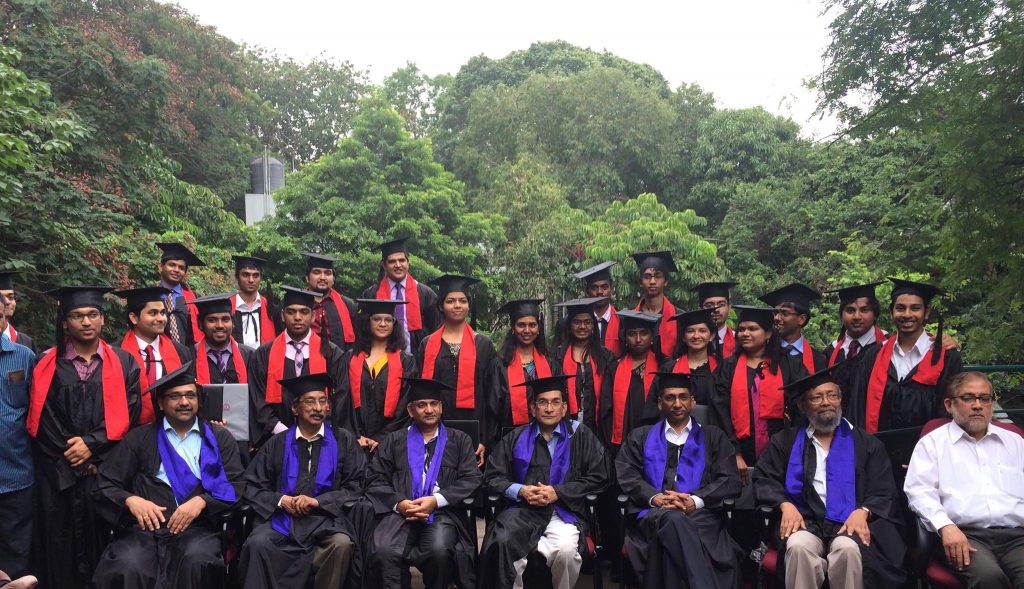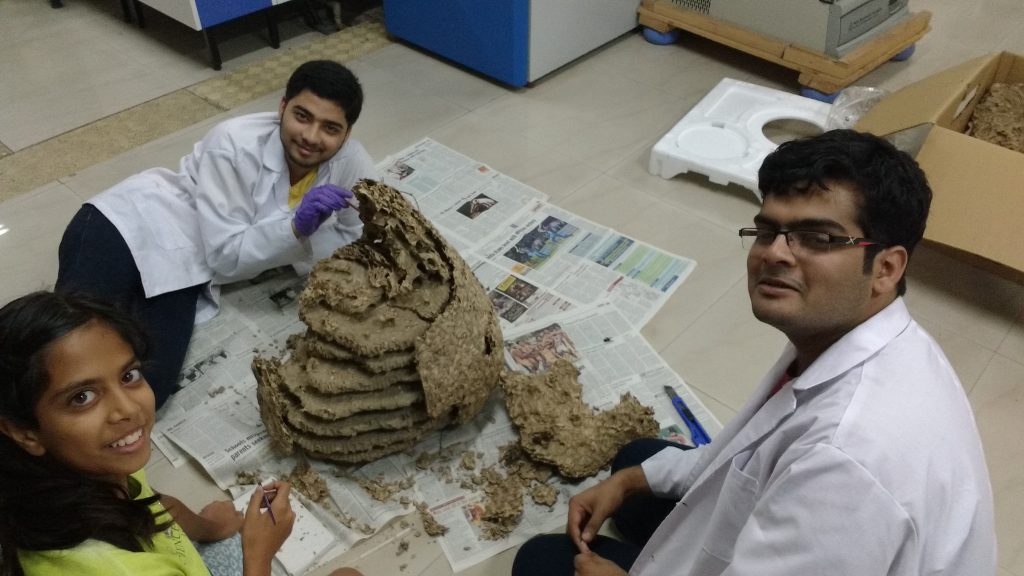Tracing the growth of IISc’s UG programme through the eyes of a student

Hailing from a small village outside Guwahati in Assam, I had no idea about the existence of IISc, let alone its undergraduate (UG) programme. I only learned about it when I was well into my 12th grade after I cleared the first round of the Kishore Vaigyanik Protsahan Yojana (KVPY), a national-level entrance and scholarship exam for students like me who want to pursue higher education in basic science (it has now been scrapped). Even though I was excited about the possibility of joining this reputed institution, there were hurdles.
I felt like I was standing at the edge of a vast ocean ready to take a plunge. I’m glad I did
For one, my KVPY interview date coincided with my board exams. After repeated emails and phone calls to the KVPY office, they agreed to postpone my interview date. My interview went well. My second issue was that my KVPY rank did not meet the first cut-off. Thankfully, I got through in the first round of spot admissions, and got an admission call from IISc. When I finally came to the campus as a UG student, it was both exciting and intimidating for a village boy like me – I felt like I was standing at the edge of a vast ocean ready to take a plunge. I’m glad I did.
During my time here, I have also had an opportunity to learn about the UG programme’s own journey, one that began with uncertainty and birth pangs, but is now already the most sought-after programme for students who want to pursue research in the sciences.
The Beginning
“The present dismal state of higher education in the country is a matter of serious concern, since this has severely limited the potential of its enormous and otherwise capable youth power,” reads the first sentence of a position paper titled Restructuring Post-School Science Teaching Programmes, published in Current Science in 2008. The birth of IISc’s UG programme can be traced back to this paper, which advocated reforming higher science education in India. It was authored by a Joint Science Education Panel comprising representatives of all the three national science academies in India – the Indian National Science Academy, the Indian Academy of Sciences, and the National Academy of Sciences, India.
The paper recommended that science teaching should use a pyramidal rather than a vertical high-rise approach. “The curriculum must provide a broad-based training of different disciplines of scientific enquiry with specialisation introduced as the student advances in training,” it reads. Among the many policy suggestions it made was to replace the traditional three-year BSc course with a four-year programme – with the final two semesters dedicated to research. It also said that graduating students could pursue a PhD directly without a Master’s degree.
IISc was the first to propose establishing a UG programme based on the suggestions made in the paper. “It took some time for various discussions to be had. Little obstacles had to be overcome, but by and large, there was a fair amount of support,” recalls Padmanabhan Balaram, IISc’s Director from 2005 to 2014. Once the approval came through, Chandan Dasgupta, Professor at the Department of Physics, was appointed as the first UG Dean in 2010. Soon, new staff were hired for the setting up of laboratories and administrative work.
IISc was the first to propose establishing a UG programme based on the suggestions made in the paper
The next order of business was to determine who would teach the courses. “Our plan was that we will not get any new faculty members. Instead, regular faculty members from the departments would do the teaching,” recalls Dasgupta. But, he adds, the administration decided to hire dedicated UG instructors to maintain, develop and teach labs. “The syllabus part and then the admission mode was discussed in great detail.” Soon, a few old buildings, including the iconic building built by CV Raman for the Department of Physics when he became the Director, were renovated to set up classrooms and labs. A new hostel block was also built to accommodate the incoming students.
Dasgupta admits that, initially, there was some concern about the quality of students who would apply for the programme. But the programme was able to get the “cream of the cream” even though many of the top applicants also obtained admission in other elite institutions like IITs, he says.
Finally, in 2011, the programme welcomed its first batch of 85 students. “It was sort of nice as the first batch of students in IISc entered in 1911, and a new batch of students who are doing something different entered in 2011,” points out Balaram, who is also a science history buff.
‘It was sort of nice as the first batch of students in IISc entered in 1911, and a new batch of students who are doing something different entered in 2011’
However, not long after it started, the programme ran into rough weather. In 2013, Delhi University (DU) decided to follow suit and start its own four-year programme. Unlike at IISc, it faced opposition from many teachers and students. The issue even snowballed into a political controversy. There were demands to scrap not just DU’s proposed programme but other such programmes in the country including IISc’s. Not long after, the University Grants Commission (UGC) sent a letter to IISc asking it to close down the programme.
The Institute’s administration swung into action and began a series of meetings with the Ministry of Human Resource Development (now Ministry of Education) explaining the rationale behind its programme. It also received the backing of scientists and other intellectuals. Finally, IISc was allowed to continue its four-year UG programme, but it had to be renamed as Bachelor of Science (Research). In the years since, more such UG programmes have come up in the country. This year alone, 105 universities have adopted this model. It is ironic that even the National Education Policy 2020 recommends four-year UG programmes, Balaram quips.

Academic life
The coursework is designed in such a way that it is not just multidisciplinary in nature but also interdisciplinary. This gives students a solid foundation in the basics of sciences as well as an opportunity to see how these fields are connected to each other. In my first three semesters, we had courses in all science subjects – physics, chemistry, mathematics, and biology. Apart from that, we had engineering courses, including in computer programming, electronics, earth and material sciences, and humanities courses. Some of them were eye-opening for science students like us. For me, the most interesting of these was one on governance in my sixth semester. The course had many guest lecturers, including a former RAW agent. But there were fewer compulsory courses from the fourth semester onwards because, by this time, we had to pick our majors. I chose to major in Biology.
Some of the courses in the humanities were eye-opening for science students like us
After the first three semesters, we had the opportunity to choose from a variety of electives because IISc has so many departments and centres. We also got to attend some of these courses with PhD, Integrated PhD, and MTech students, which was a bonus. However, there is a flipside to having too many courses to choose from. Sometimes too much freedom, especially at the UG level, means that we end up choosing courses that may not be ideal, says Abhinav Jain, a former student from the first batch. I felt that a few courses were difficult to keep up with, especially before choosing my major, because they did not start at the foundation level. This view is also echoed by Medha Shekhar from the 2012 batch. “There was no bridge between the 12th level and UG classes,” Medha says. She also feels that some courses tried to cram too much content in one semester.
From the academic year 2022-23, the UG administration has made some significant changes in the curriculum. The changes, made after taking into account the views of both the students and UG instructors, allow for more flexibility. For instance, in the second semester, a student can now drop one of the science subjects. And after the third semester, there are no compulsory engineering credits. There has been another major structural change, says Balaji Jagirdar, Dean of the UG programme. “If the students missed taking or dropped one science subject in the second and third semesters, they can now come back in the fourth, fifth and sixth semesters and take those courses, so that they don’t miss out on any of the basic courses.”

In our final year, when most of our course work is already complete – we are expected to complete a minimum of 131 credits in all – we carry out original research culminating in a thesis. But only about half the students move on from IISc after the first four years. The others stay back for another year to continue their research. This allows them to instead get a Master of Science (Research) degree, an option I too have chosen to exercise. I am currently working in the lab of Srimonta Gayen, Assistant Professor in the Department of Developmental Biology and Genetics. I study how behaviour and environment influence the regulation of X-chromosome inactivation (because female mammalian cells have two X-chromosomes, one of them is inactivated during the early stages of development to maintain gene balance).
The UG programme is set up to ensure that a student is equipped with the knowledge and skills required to succeed in academic life. Nagasuma Chandra, Associate Dean of the UG programme, believes that the structure and quality of the UG programme ensures that a fourth-year student is academically somewhat closer to a PhD student who is in the middle of their research programme. “They’ve advanced by a few years already and will not be starting from scratch as a PhD student. They have the research exposure because of the course structure, interactions and research internship opportunities.” Besides, as Jagirdar points out, research is addictive. “Once the students enter a research laboratory, they would love to be in it.” But not all students choose to do their PhD in the sciences. Some have deviated from this path – they have gone to study economics, science communication, even filmmaking.
The UG programme is set up to ensure that a student is equipped with the knowledge and skills required to succeed in academic life
Life outside labs
“They are everywhere” is a typical remark about us UG students on campus. Remember, we number only about 500 in a campus with a student population of close to 5,000, a faculty strength of nearly 500 and a staff that numbers around 2,000. But we are indeed everywhere – from sports to cultural events to tech fests – not just as members, but as office bearers too. I myself have been serving as the Carrom Club Convener since July 2021, and it has been a great experience.
We UG students organise Pravega, the hugely popular annual cultural and sci-tech fest. “It was during our third year, and we wanted to do something, and as such, Pravega came into being,” recalls Jain. While second and third year UG students typically take up roles as coordinators, first year students volunteer in organising the event. The upcoming 10th edition of Pravega will take place from 26-28 January next year.
I must add that there is a great deal of camaraderie in the UG community. In our first two years, we usually share our rooms with another student. Shared living helps us a lot since this is the first time most students have been away from home. Seniors are always approachable, when we have issues, be it academic or non-academic. I was a bit apprehensive in the beginning, as this was the first time I was living outside Assam by myself. However, I found my moment of calm when a senior said, “Yaar, Bhaiya mat bulao, I’m just one year senior to you; take it easy, chill!”

But life is not always rosy for students, especially for those dealing with mental health issues. We UG students enter IISc after going through a period of intense studying for our board and competitive exams, and the pressure that comes with it. “I think students are sometimes burnt out by the time they come here. The system has to change for students to feel good in any programme, not just in IITs or IISc,” says Chandra. And once you enter an institution like IISc, it can be overwhelming at times given the responsibilities and expectations – from family, faculty, yourself. The situation was particularly difficult for some students – not just in IISc, but across the world – during the COVID-19 pandemic. When I was facing some self-doubts during my first year, I spoke with the then Dean of the programme, PS Anil Kumar, and the conversation helped me immensely. One can also talk to senior students. Besides, IISc has a Wellness Centre that has Wellness Coordinators, Consulting Psychologists, and Consulting Psychiatrists. “One measure that we have been consciously implementing is not to have any UG classes after 5.30 in the evening, and no classes during the weekends or holidays. This essentially opens up some free time in the evenings for every student to engage in some outdoor activities,” Jagirdar says.
I fell in love with genetics during my 12th grade and I am delighted that I was able to pursue research in the field at IISc
Expansion
In the academic year 2022-2023, IISc started a BTech in Mathematics and Computing. A new UG complex is also coming up on campus, one that can accommodate over 1,000 students. Jagirdar is optimistic about the future of the initiative. “We hope that the UG programme is going to become a flagship programme of the Institute. This is something which the Institute has to offer to the country in terms of strengthening undergraduate educationin the country.” He also feels that in the future there are likely to be more UG-centric placements in industry, especially with the BTech programme gaining steam.
Growing up, I wanted to be an astrophysicist or an engineer. But I fell in love with genetics during my 12th grade and I am delighted that I was able to pursue research in the field at IISc. Besides being exposed to the academic world, I have also experienced significant personal growth as a UG student. It has easily been the most significant phase of my life yet. And I’m not the only one who has had this experience. “What I’ve seen [in students],” Chandra says, “is a beautiful transition from a very young, sometimes shy, and sometimes innocent [person] to somebody who is mature and confident at the end of four years.”
Akash Kalita is a Master of Science (Research) student at IISc and a former science writing intern at the Office of Communications




